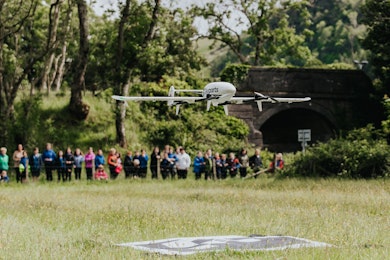Five steps to AI-business
Build prototypes on small data sets to gain momentum, support and experience with AI in your organization. Remember to train and involve everyone from the C-suite to frontline employees in the transformation.

Steps to AI Transformation
It takes 2-3 years to transform a large company into an AI company, but initial results should be evident within 6-12 months. This is the experience of former Google Brain Founder and Lead, Andrew Ng.
He is a man who knows his AI, having previously also served as Chief Scientist at Baidu, and currently working as the Founder of Landing AI and as Adjunct Professor at Stanford University.He is also the author of the AI transformation Playbook which, according to Michael Kai Petersen, a Senior Scientist at Oticon Research Center, is an excellent playbook for established companies looking to transform.
Andrew Ng splits the transformation into five steps
- Execute pilot projects to gain momentum. Start experimenting using AI on something in the company that is not critical to core business. While still at Google, Andrew Ng and his team began working with AI on Google Speech, which is not the most important function to Google, but still is of importance. Andrew Ng suggests putting an internal and cross-functional AI team together with external AI-consultants to get experience. The first AI solutions should show traction within 6 to 12 months. Thus, the first projects need to be technically feasible. When the first results begin to show, it is easier to spread AI to other parts of the business.
- Build an in-house AI-team. External partners can help accelerate your AI implementation. However, in the long run, having the internal expertise will give you a competitive advantage. After the initial projects, replicate the model in other divisions to support their AI efforts. Source AI talent from different divisions of the company and develop standards for recruiting and retention. There is a war for AI talent, so training your existing team is an excellent way to create new talent in-house.
- Provide broad AI training. AI is projected to transform jobs across the corporate hierarchy, so it’s critical to give everyone relevant AI knowledge. For example, the C-suite will require a few hours of training to support the changes relevant to their roles, whereas Engineers will require more extensive training to reflect their frontline roles in the future of AI.
- Develop an AI strategy. Corporations should have an AI Strategy by now, according to Andrew Ng. With initial projects and experience under your belt, you will have the knowledge to know where in your business AI can deliver the most value. Talking strategy, he underlines that you ought not to try to compete with tech leaders in AI like Google and Baidu, but instead aim to be an AI leader in your specific industry. Usually, the use of data will lead to better products, and that will lead to more customers. But small data can be of more value than big data. It’s all about the quality of the data, so don’t acquire large pools of data just for the sake of accelerating your AI transformation. Make sure the data is the right for you.
- Develop internal and external communications.
As AI transforms your business, remember to communicate throughout the journey to all stakeholders, i.e.:
- Investor Relations- describing your AI strategy will help investors understand the potential.
- Government relations - especially in highly regulated sectors, to build trust and goodwill.
- Customers- how you will use data and what are the new benefits. Talent and internal communication is the key.









